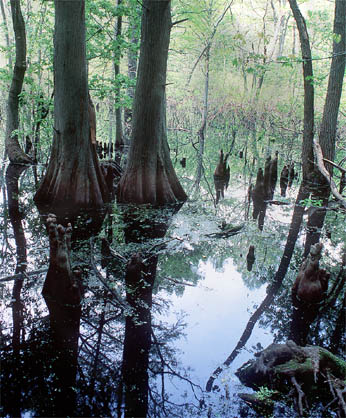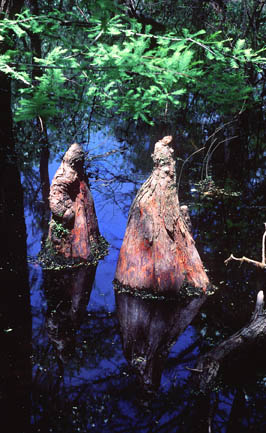|
|
of Twin Swamps Nature Preserve Taxodium distichum |
|
| ||
|
|
|
|
|
| ||
|
have taken their toll. Twin Swamps Nature Preserve was set aside in 1987 to help save one of Indiana's last stands of bald cypress. These trees, relatives of the ancient redwoods and sequoias of California, are common in southern swamps along the Gulf Coast and the Lower Mississippi, but they reach their northern limit here, not far from the Wabash River in Indiana. | ||||||
|
|
|
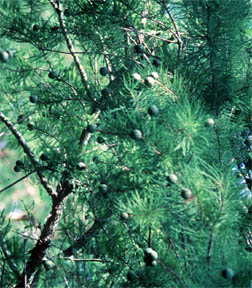 Bald cypress trees love the water. Their buttressed bases help them stand tall in the muddy soil. These are coniferous trees, but they're not evergreen. The soft, feathery needles turn brown and drop off in the fall. |
|
| ||
|
|
|
|
|
The unusual "knees" of the bald cypress are distinctive.
The roots send up knobby extensions that protrude from the
water, sometimes taking odd shapes. (I call this pair "the
king and the queen.")
|
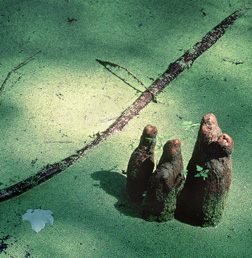 |
|
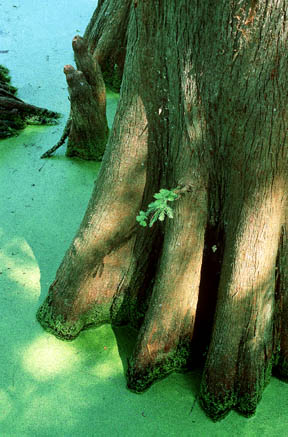 |
|
Here's a closer look at the base of a cypress and a group of knees. One theory suggests that the knees extend into the air to help get oxygen to the roots. Pale green duckweed is covering the surface of the water. | ||
|
| ||
|
| ||
|
Plant Index Trail Map |
